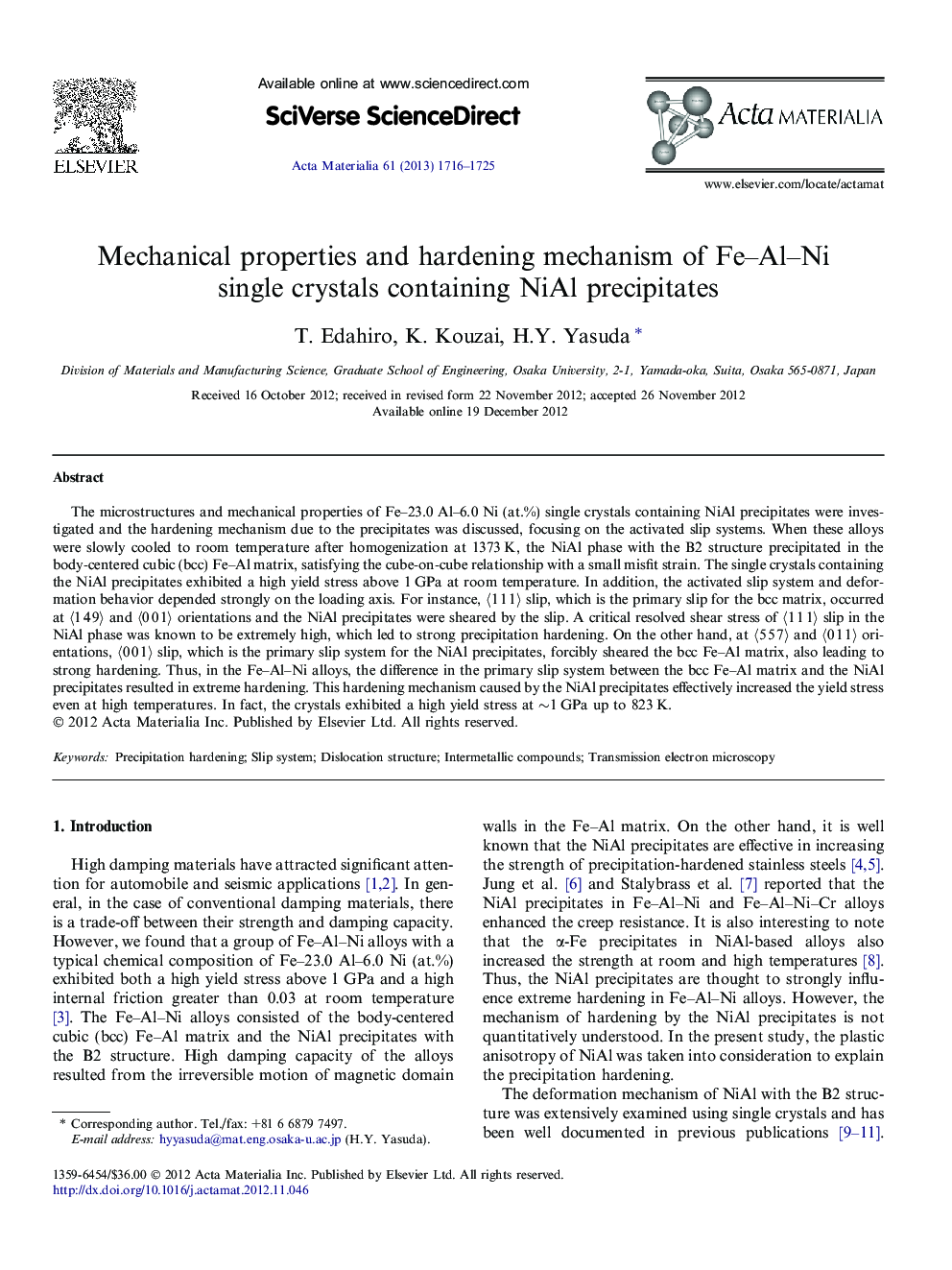| Article ID | Journal | Published Year | Pages | File Type |
|---|---|---|---|---|
| 1446013 | Acta Materialia | 2013 | 10 Pages |
The microstructures and mechanical properties of Fe–23.0 Al–6.0 Ni (at.%) single crystals containing NiAl precipitates were investigated and the hardening mechanism due to the precipitates was discussed, focusing on the activated slip systems. When these alloys were slowly cooled to room temperature after homogenization at 1373 K, the NiAl phase with the B2 structure precipitated in the body-centered cubic (bcc) Fe–Al matrix, satisfying the cube-on-cube relationship with a small misfit strain. The single crystals containing the NiAl precipitates exhibited a high yield stress above 1 GPa at room temperature. In addition, the activated slip system and deformation behavior depended strongly on the loading axis. For instance, 〈1 1 1〉 slip, which is the primary slip for the bcc matrix, occurred at 〈1 4 9〉 and 〈0 0 1〉 orientations and the NiAl precipitates were sheared by the slip. A critical resolved shear stress of 〈1 1 1〉 slip in the NiAl phase was known to be extremely high, which led to strong precipitation hardening. On the other hand, at 〈5 5 7〉 and 〈0 1 1〉 orientations, 〈0 0 1〉 slip, which is the primary slip system for the NiAl precipitates, forcibly sheared the bcc Fe–Al matrix, also leading to strong hardening. Thus, in the Fe–Al–Ni alloys, the difference in the primary slip system between the bcc Fe–Al matrix and the NiAl precipitates resulted in extreme hardening. This hardening mechanism caused by the NiAl precipitates effectively increased the yield stress even at high temperatures. In fact, the crystals exhibited a high yield stress at ∼1 GPa up to 823 K.
